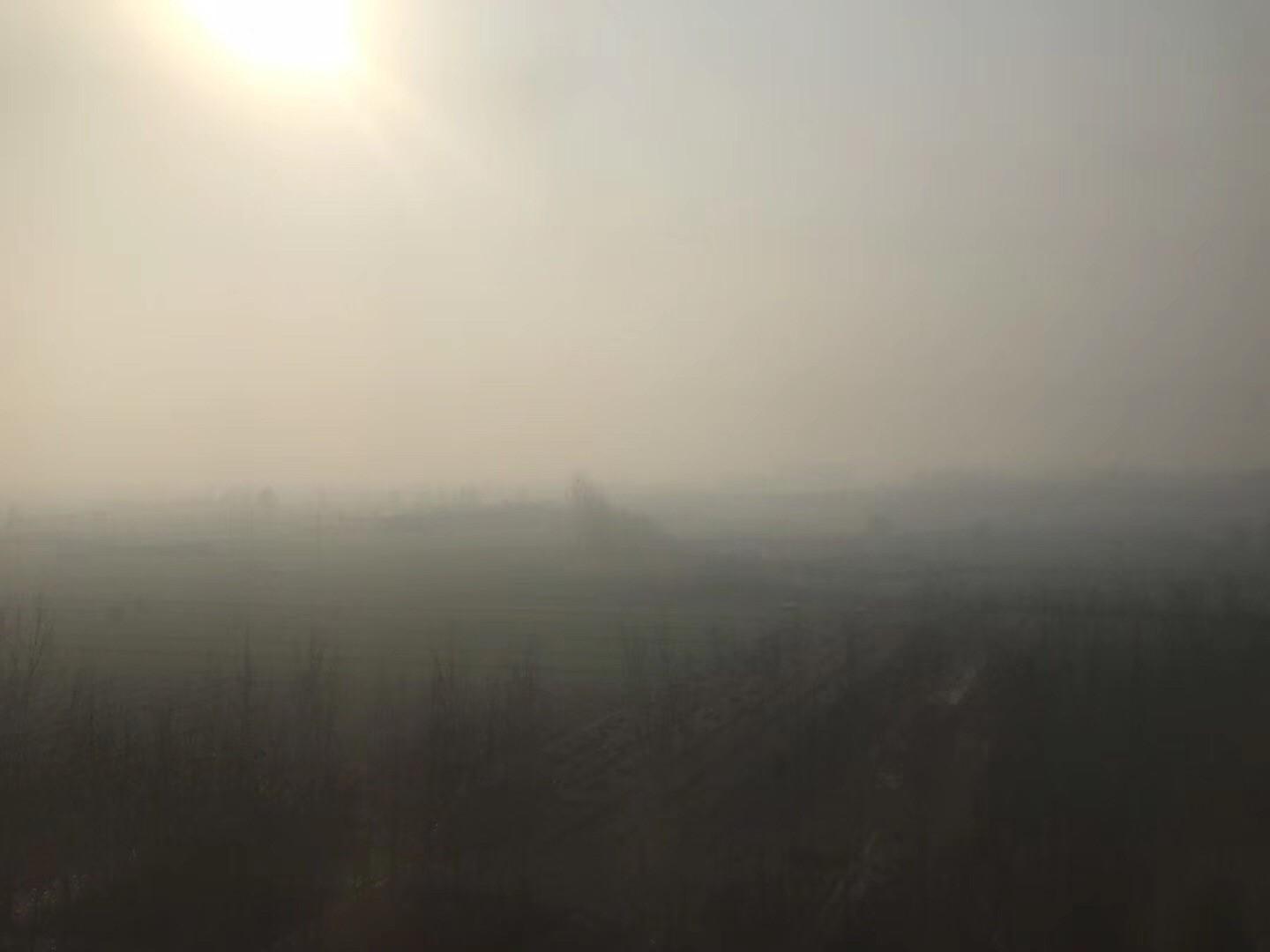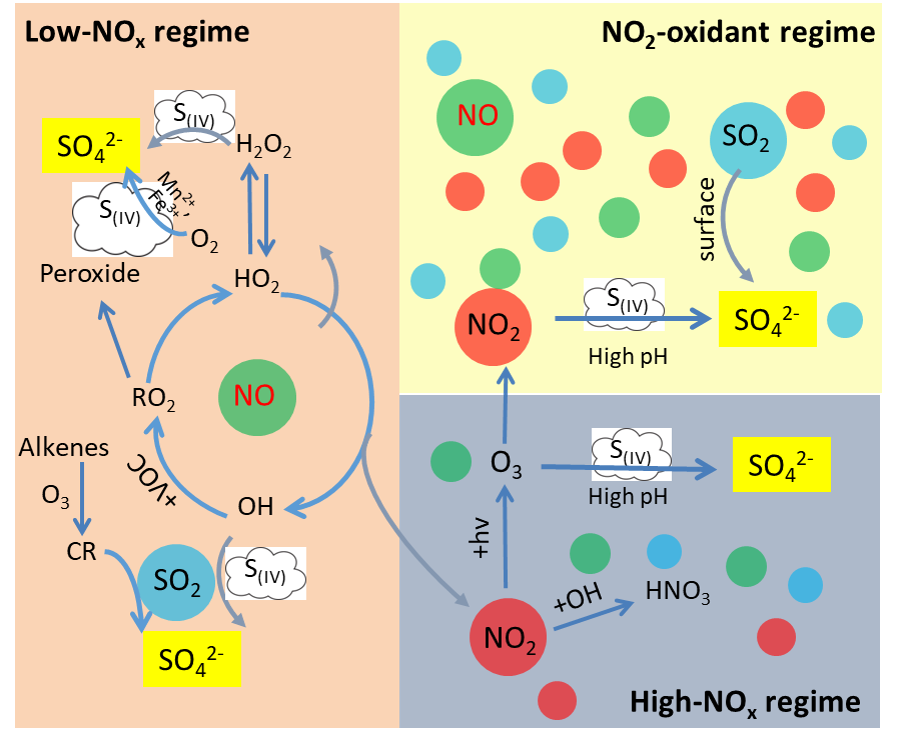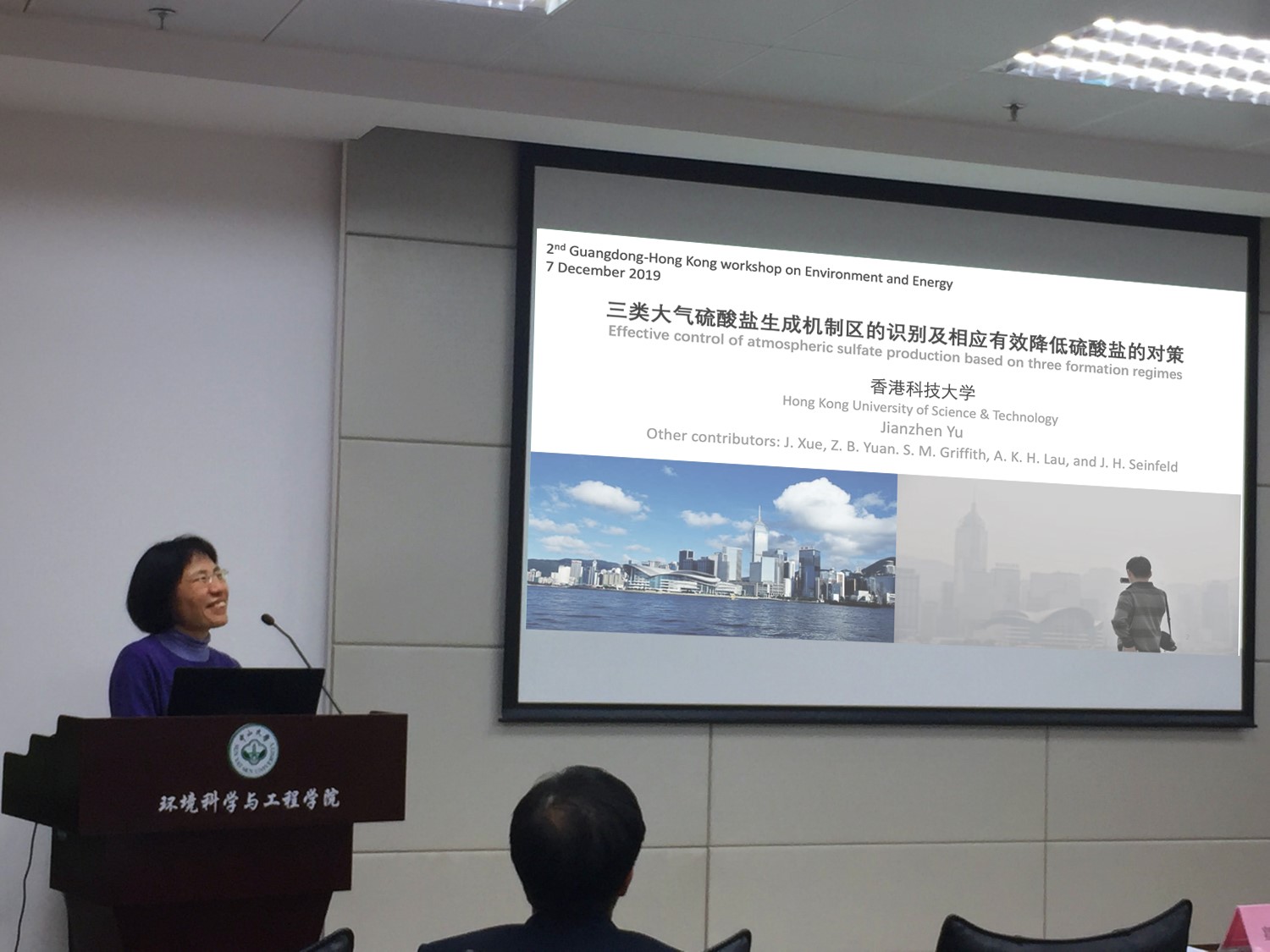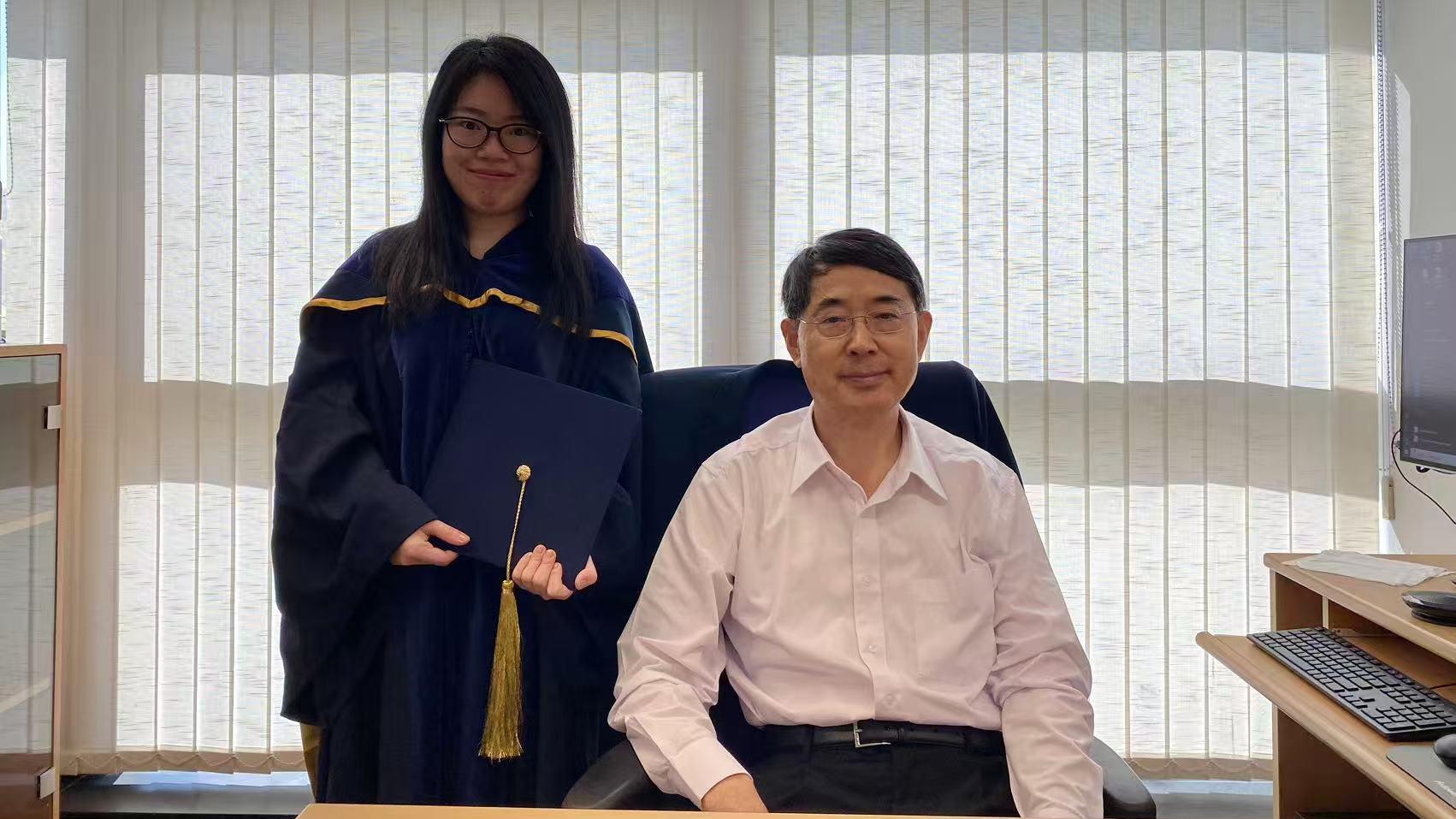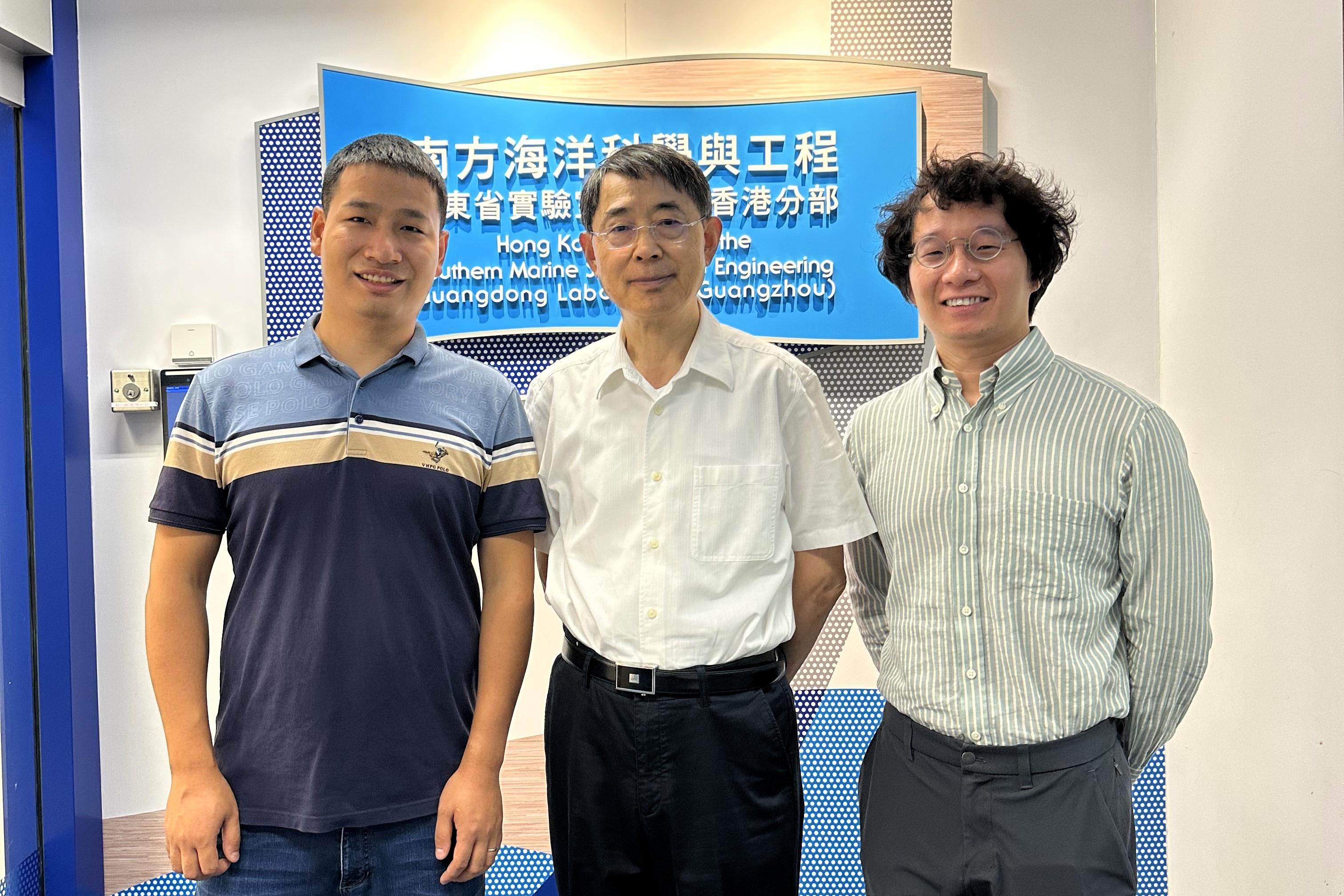A research team led by scientists from the Hong Kong University of Science and Technology (HKUST) unveiled a first-in-kind study of nitrogen oxides (NOx) and its role in the rise and fall of airborne sulfates in hazy air pollution, offering policymakers new insights into ways to tackle smoggy weather.
Dense, hazy fog episodes characterized by relatively high humidity, low visibility and extremely high PM2.5 have been a headache to many megacities including those in Mainland China. Among pollutants that are less than 2.5 microns in diameter (PM2.5), airborne sulfate is one of the most common components of hazy air pollution formed atmospherically via the oxidation of sulphur dioxide (SO2).
While the reactant-product link between sulphur dioxide and airborne sulfate formation is common knowledge, the complex oxidants and mechanisms that enable this transformation are not. In particular, the role of nitrogen oxides in sulfate production is unclear. Managing sulfate pollution has dogged researchers and governments alike as it is not produced directly from pollution sources, unlike nitrogen oxides which are clearly emitted from vehicle exhaust, and the combustion of fossil fuels like coal, diesel and natural gas. This is the first study systematically examining the multiple roles of nitrogen oxides in affecting oxidants that enable this set of chemical reactions.
In collaboration with the California Institute of Technology, a research team led by Prof. YU Jianzhen, Professor at HKUST’s Department of Chemistry and Division of Environment and Sustainability, identified three formation mechanism regimes, corresponding to the three distinct roles that nitrogen oxides play in sulfate production depending on the chemical surroundings. Under low NOx conditions, NOx catalyze the cycling of hydroxyl radicals, an effective oxidant of SO2, and thus promote formation of sulfate. Under extremely high NOx common in haze-fog conditions, NOx act as dominant oxidants of SO2 and thus also promote formation of sulfate. But in an environment with medium-high level of NOx, nitrogen dioxide (a member of the NOx family) would actually serve as a sink for hydroxyl radicals which supresses the oxidation of sulphur dioxide and thus inhibits sulfate formation.
These findings indicate that in order to reduce sulfate levels in highly polluted haze-fog conditions, co-control of SO2 and NOx emissions is necessary. However, since NOx would inhibit sulfate formation when its emissions are intermediately high, suppressing NOx in such environment would thus bring up sulfate levels in the air.
“Since sulfate is formed atmospherically and cannot be controlled directly, we must target its precursor components (such as sulphur dioxide and nitrogen oxides). Effective reduction of sulfate content in the air relies on knowledge of the quantitative relationship it has with its precursors. This work lays the conceptual framework to delineate the relationship between sulfate and one set of its controllable precursors, nitrogen oxides (NOx) – the low and extremely high concentration of NOx could both fuel up the production of sulfate. The policymakers should pay attention to when they try to control the emission of NOx,” explained Prof. Yu.
As sulfate is one of the major components which leads to haze formation and acid rain, this study laid the groundwork for formulating more effective measures of targeting this major pollutant involved in aforementioned events – which do not just block the views or make aquatic environments more acidic, but also compromise human health. With greater understanding and better control, this will lead to improved air quality and better protection of public health and ecological systems as a whole.
The team’s findings were recently published in the scientific journal Nature Geoscience.
About The Hong Kong University of Science and Technology
The Hong Kong University of Science and Technology (HKUST) (www.ust.hk) is a world-class research university that focuses on science, technology and business as well as humanities and social science. HKUST offers an international campus, and a holistic and interdisciplinary pedagogy to nurture well-rounded graduates with global vision, a strong entrepreneurial spirit and innovative thinking. HKUST attained the highest proportion of internationally excellent research work in the Research Assessment Exercise 2014 of Hong Kong’s University Grants Committee, and is ranked as the world’s best young university in Times Higher Education’s Young University Rankings 2019. Its graduates were ranked 16th worldwide and top in Greater China in Global University Employability Survey 2018.
